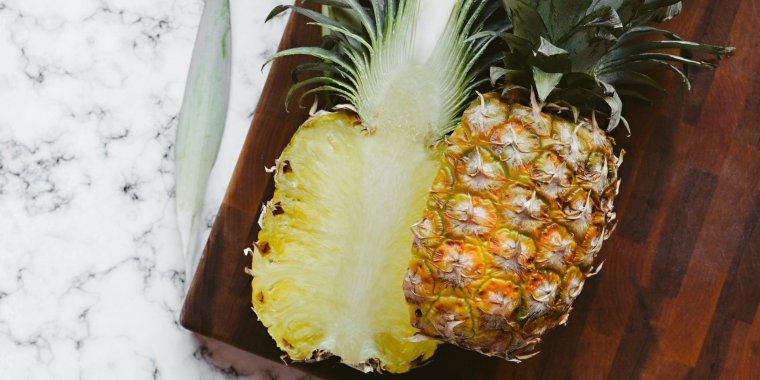| News / Science News |
Scientists turn pineapple waste into high-value aerogels
Harvesting of pineapples, a widely grown tropical fruit, leaves behind tons of agricultural residues which are usually burned or left to rot, creating undesirable greenhouse gases and other pollutants. But a new process promises to convert the waste into high value aerogels.

Scientists turn pineapple waste into high-value aerogels. Photo: Pineapple Supply Co./Unsplash
Aerogels are among the lightest solid materials known and are created by combining a polymer with a solvent to form a gel, and then removing the liquid from the gel and replacing it with air. They are extremely porous and have low density but remain firm to the touch.
Duong Hai Minh, a professor at the National University of Singapore’s (NUS) department of mechanical engineering, estimates that every year 76.4 million tonnes of pineapple leaf waste is generated. He believes, this could release harmful chemicals and greenhouse gases that can cause serious environmental problems.
“For each kilogram of the fruit produced, almost three times as much pineapple leaf waste is generated. Farmers saddled with this bulky and fibrous by-product usually burn, compost, or repurpose it as animal feed,” says Duong.
Commercial aerogels, used primarily for heat and sound insulation, are costly and the manufacturing process typically involves release of toxic levels of carbon, says Duong.
His process uses pineapple leaf fibres to create ultra-light, biodegradable aerogels. They are effective as oil absorbents and for heat and sound insulation.
“Our latest work, to make eco-aerogels using agricultural and food waste, started in August 2016 and took three years to achieve promising results,” says Duong. “We have also successfully produced eco-aerogels using sugarcane bagasse, coffee grounds and okra.”
In the new process, pineapple fibres are extracted from the leaves using a decortication machine and then mixed with cross-linker polyvinyl alcohol (PVA) and cured at 80 degrees Celsius to promote cross-linking between the fibres and PVA.
On average, it takes 10—12 hours to produce aerogels from the raw materials, which is much faster than comparable processes.
“A one square metre sheet of eco-aerogel, measuring one centimetre in thickness, costs less than US$7 to produce, and can be sold for between US$22 and US$37. A commercially manufactured thermal insulation sheet made using conventional aerogels of about the same size may retail for more than US$220.”
The NUS team is working with partners to pilot the large-scale production of these eco-aerogels for high-value applications such as food preservation, heat insulation, noise reduction, oil-spill cleaning and reusable masks for filtering toxic gases, dust particles and bacteria.
Pineapple is one of the most favoured fruits in the world. The three biggest producers globally are Costa Rica, Brazil and the Philippines. (SciDev.Net)
YOU MAY ALSO LIKE





